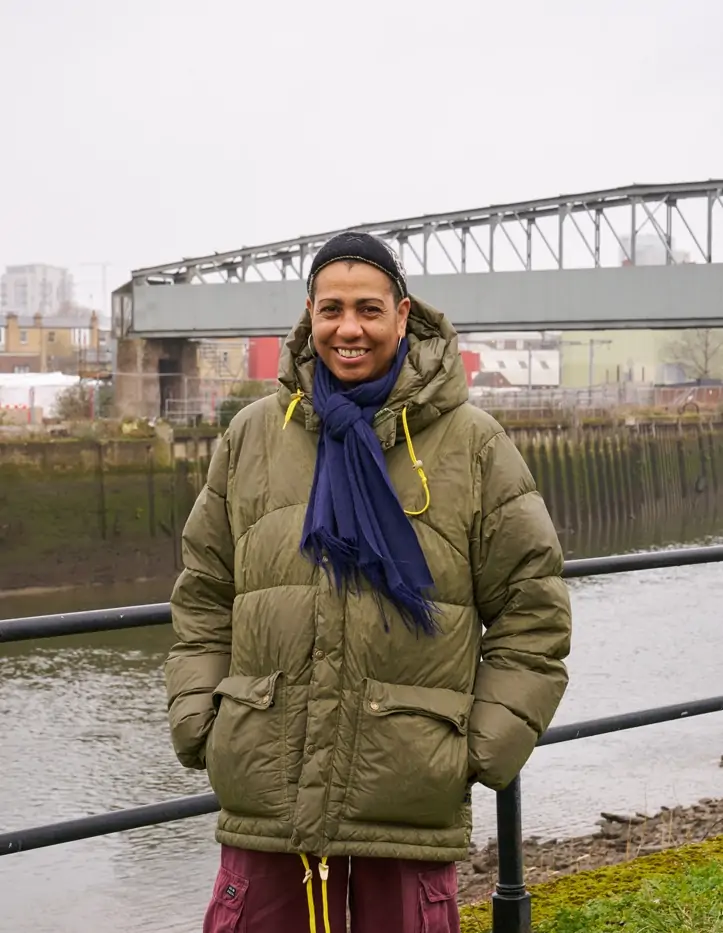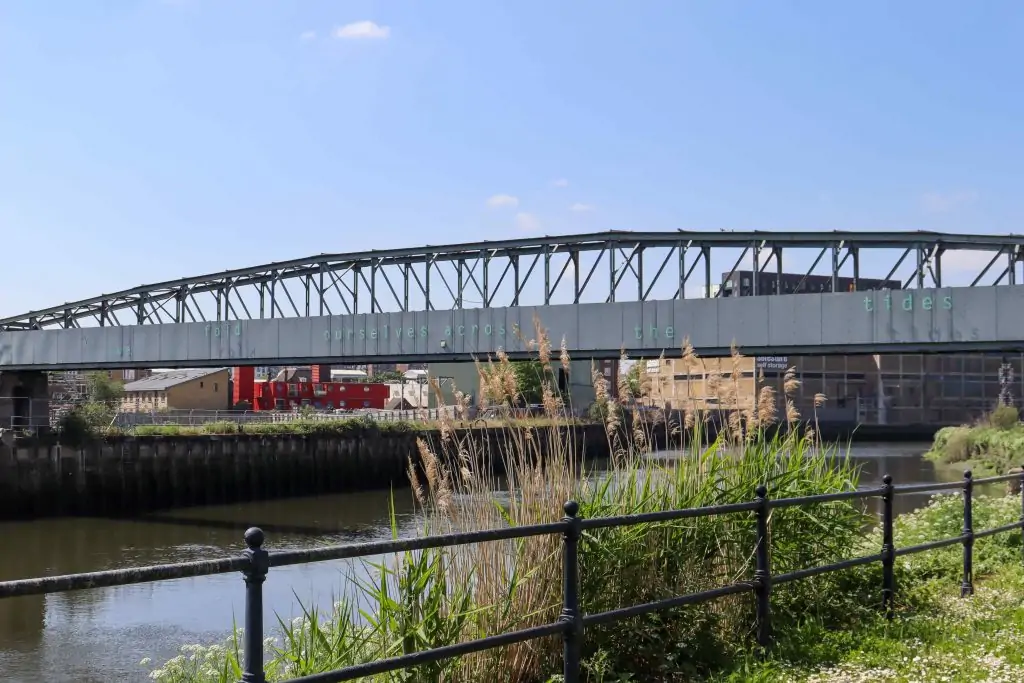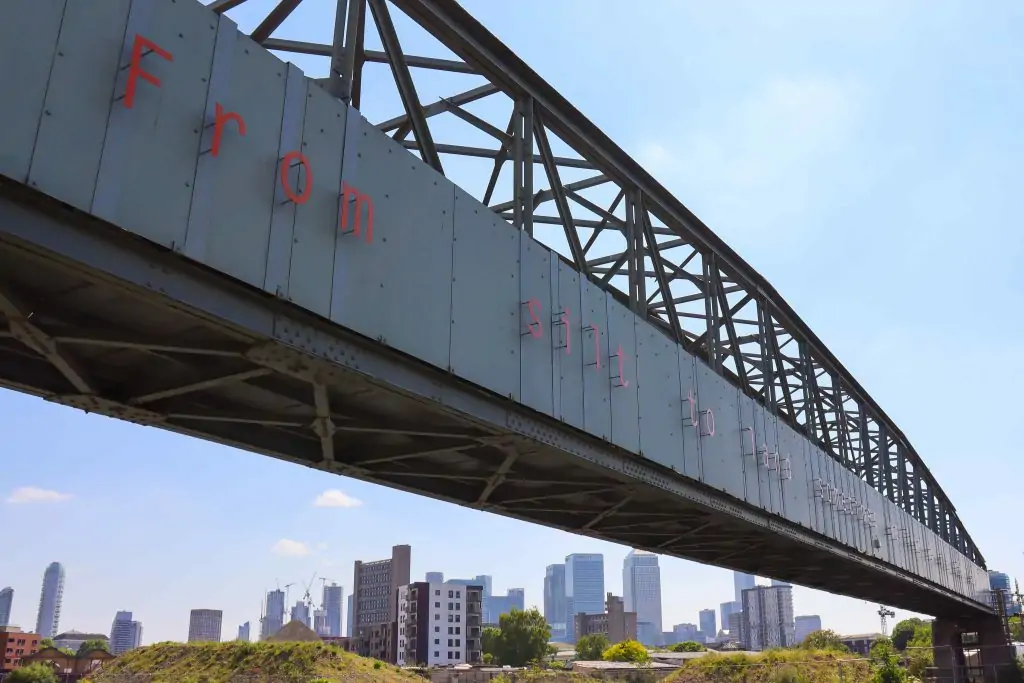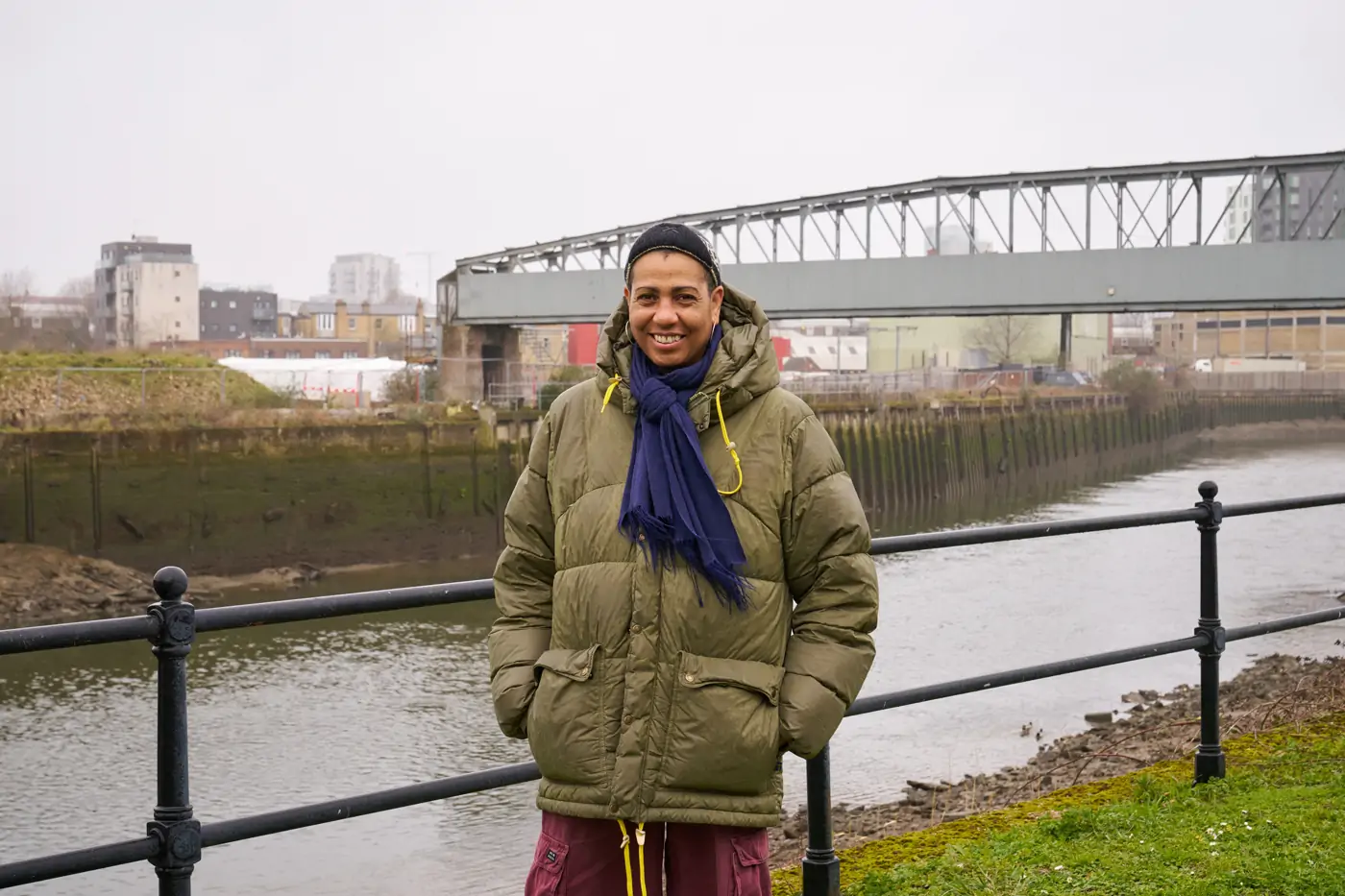Helen Cammock has become the latest artist to join the roster of luminaries featured on The Line – the public art trail tracing the waterways and line of the Greenwich Meridian across East London. Free to the public year round, The Line’s outdoor exhibition programme runs from Queen Elizabeth Olympic Park at Stratford to North Greenwich, and is rooted in the history and character of the area. The works aim to inspire a sense of discovery, encouraging people to look to the landscapes around the River Lea with fresh eyes.
Set to be unveiled on 23 May 2024, marking nine years to the day since The Line opened to the public, Cammock’s installation On WindTides will stand alongside major works by the likes of Larry Achiampong, Tracey Emin, Antony Gormley, Madge Gill, and Yinka Ilori. This new installation reflects on its setting, and the nature, history and community that surrounds it.

Image Courtesy The Line
Poetic text leaves space for interpretation, space for feelings to settle. I hope the texts will provide a space for reflection as people inhabit the areas around the bridge.
Helen Cammock
On WindTides is one of three new artworks to be added to The Line this year, supported by Newham Council – part of its Neighbourhood Investment Programme to evolve more inclusive and resilient communities, including enhancements to the public realm and improvements to pedestrian and cycling routes. Each commission is developed through a co-commissioning model to foster a greater sense of ownership with residents and local groups to Newham’s vibrant Cody Dock area.

Image Courtesy The Line
A bridge across time and space
On WindTides is a monumental text-based work set to occupy both sides of thecable bridge that crosses the tidal River Lea at the boundary between Tower Hamlets and Newham, just north of Cody Dock. Once a heavily industrial area, the location is now frequently enjoyed by walkers, runners and cyclists, and is home to a diverse array of wildlife.
The artwork reflects Cammock’s abiding interest in voice, narrative and social history – the point at which lived experiences and collective histories intersect. For On WindTides, she took the idea of the waterway as a connector across both time and space to consider and explore movement and migration, and the changing identities of both ourselves and our communities.
One side of the bridge bears the words ‘we fold ourselves across the tides’ – inviting viewers to consider what it means to embrace the different ‘folds’ or dimensions of our lives, how we reimagine ourselves in response to the tides within and around us, and how the neighbourhoods, communities and ecosystems around us change through time.
The other side carries the phrase ‘from silt to land sometimes we live as wind blown sand’ – asking us to consider our temporality and subject position when set against the ebbs and flows of the Earth, and reminding us that migration and movement from one location to another are a fundamental part of human existence.
With both Tower Hamlets and Newham home to large populations of migrant communities, the words take on a deeper resonance. Cammock’s text prompts us to reflect on how we might move and shift geographically and also within communities and families. We might land somewhere through intent or unexpectedly, but always becoming part of the fabric of the habitat, either long-term or until we are blown – or choose to take ourselves – somewhere else.

Image Courtesy The Line
Each letter in the work is formed from powder-coated steel, standing proud from the surface of the bridge so that there is a subtle play of light and shadow in response to the movement of the sun over the course of the day. Set against the grey of the bridge surface, the first text is rendered in a hand-mixed mint/apple green that references the ecology of the setting – the flora of an otherwise industrial landscape. The second represents the sand and silt, muds and reeds of the riverine landscape in a warm ochre tone. The typeface – Letter Gothic MT Med – is a signature of Cammock’s text artworks.
In conversation with community
On WindTides is as rooted in the local community as it is in the surrounding landscape. Cammock’s is not the only voice that speaks through the artwork. On WindTides will also be accompanied by a series of text-based works on paper created by people in community groups living in, or connected to, this part of the city. Over a series of workshops with Cammock, residents were encouraged to develop their own text-based responses to the location and the themes that On WindTides explores.
Housed in a bespoke fabricated display cabinet close by, these works will be presented one by one, on a monthly basis, for two years after the launch of Cammock’s installation. From their position on the river path, these works stand in conversation with the words on the bridge, creating a shifting dialogue that changes in tone and content each time a new piece is displayed.

Image Courtesy The Line
About Helen Cammock
Helen Cammock was born in Staffordshire in 1970. She studied at the University of Brighton and the Royal College of Art, London. Today she is based in both North Wales and East London, and works across film, photography, print, text, and performance, producing works that stem from a deeply involved research process that explores the complexities of social histories. Central to her practice is the voice: the uncovering of marginalised voices within history; the question of who speaks on behalf of whom and on what terms; and how her own voice reflects in different ways on the stories explored in her work.
Cammock was a joint winner of the Turner Prize in 2019, nominated for her solo exhibition The Long Note at Void Gallery, Derry (2018) which was subsequently exhibited at Irish Museum of Modern Art, Dublin (2019). Commissioned by Void, The Long Note is a film which explores the history and role of women in the civil rights movement in Derry/Londonderry in 1968, a period generally acknowledged to be the starting point of the Troubles – the Northern Ireland conflict that spanned the 1960s through to the Good Friday Agreement of 1998.
On WindTides will be available to view from the river path to the north of Cody Dock, London E3 3TT (dust.found.owners on the What3Words app) from 23 May 2024.
The official launch on the 23rd will be accompanied by a community artwork exhibition Swirling Eddies, Tender Breeze, which features Helen Cammock’s film, commissioned by The Line, The Lay Shaft Drive is Down – a meditative exploration of the area’s milling heritage – at The House Mill, The Miller’s House, Three Mill Lane, London E3 3DU.
©2024 Helen Cammock





